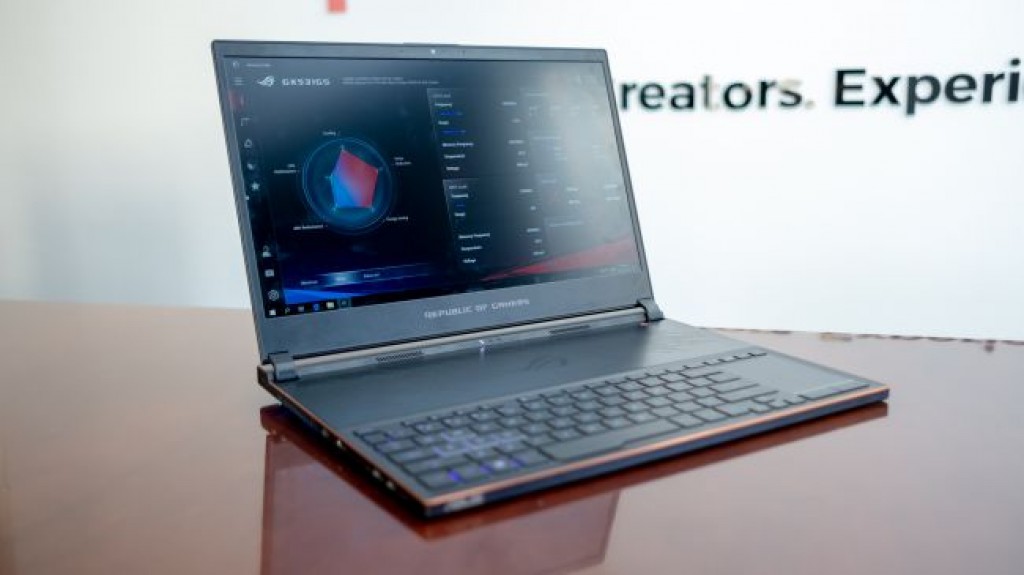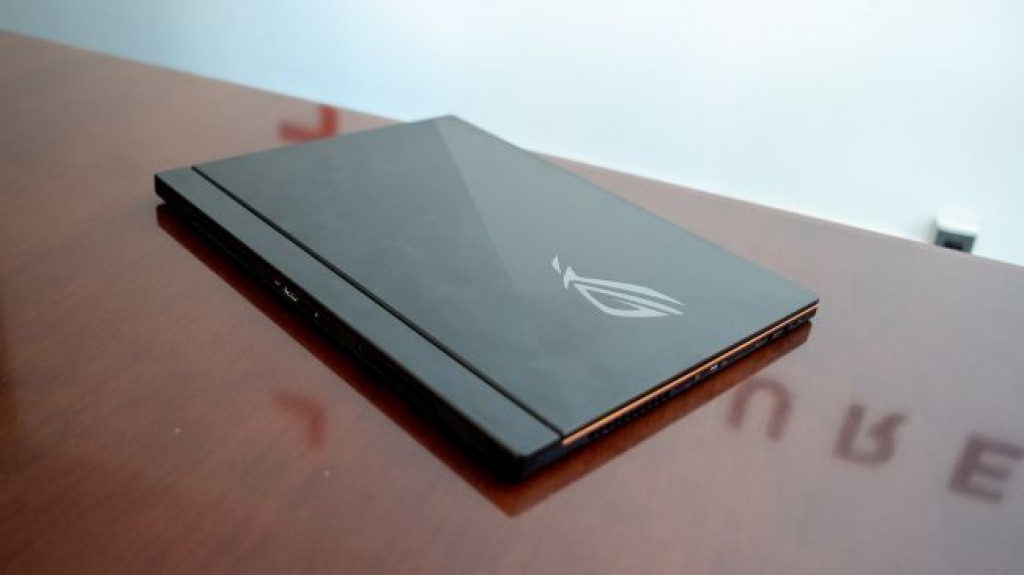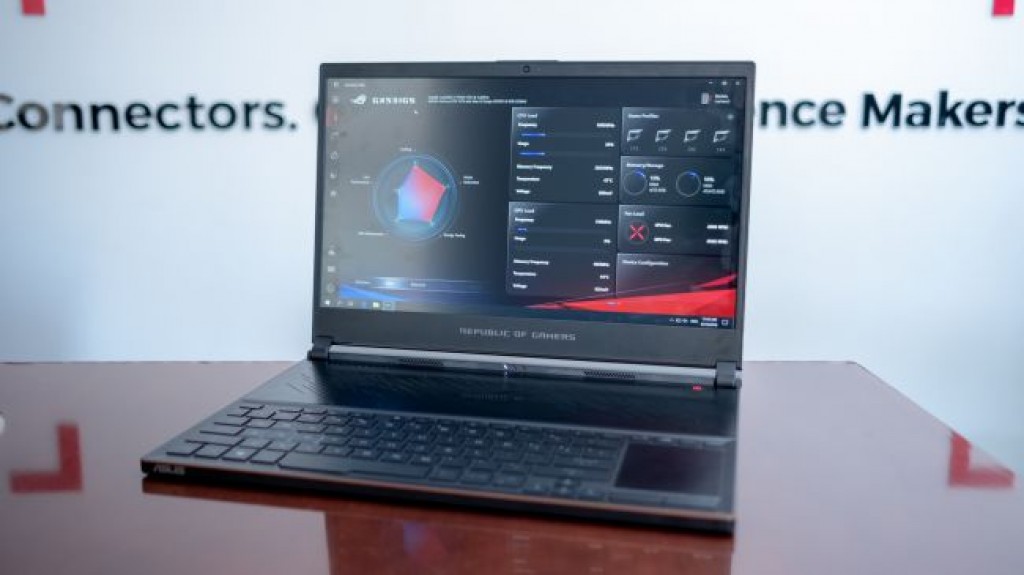
OUR EARLY VERDICT
The Asus ROG Zephyrus S looks to be better built and smaller than its predecessor in every way, but we’re uncertain about the sacrifices it has made to get here.
FOR
- 15-inch gaming laptop in a 14-inch shell
- Sturdier overall build quality
- Lightest, thinnest gaming laptop in its class
AGAINST
- Graphics max out with Nvidia GTX 1070 Max-Q
- Battery size and capacity hasn’t increased
The Asus ROG Zephyrus S GX531 wants to be the thinnest, lightest and most silent Nvidia Max Q machine out there. Thanks to narrow screen bezels, thin chassis and a rigid build, this gaming laptop has succeeded the original Asus ROG Zephyrus GX501 in almost every way, while fixing so many problems we had with the original.
Price and availability
Available in two flavors at launch in the US (but only one in the UK), we got our hands on the more expensive and powerful GX531GS version of the Asus ROG Zephyrus S equipped with a Nvidia GTX 1070 Max-Q graphics card. This particular version will only be available at Amazon for $2,199 (about £1,730, AU$3,030). At this price point the gaming laptop comes impressively equipped with an Intel Core i7-8750H processor, 16GB of RAM, 1TB NVMe SSD and a Full HD 144Hz display.
Outside of Amazon, Asus will be selling a lower-tier GX531GM version equipped with a Nvidia GTX 1060, but still the same processor, 16GB of RAM and 1TB NVMe SSD for $2,099 or £1,999 (about AU$2,890). This will be the only model available in the UK.
These price points are respectable enough, and we expect some Black Friday and Cyber Monday deals to make it even more reasonable. And, if you’re looking to get your hands on this laptop, you’ll be able to pick it up in stores now.
A comparably-equipped Razer Blade rings up for $2,599 (£2,329, AU$3,999) with all the same specs, except it only has a 512GB SSD. The $1,999 (£1,799, AU$3,339) MSI GS65 Stealth Thin mirrors the Razer Blade’s specs with an additional 1TB hard drive to be the most affordable, thin gaming laptop.

Design
The original Asus ROG Zephyrus impressed us with how thin and light a gaming laptop could be with basically no compromises. And, the Zephyrus S is even more impressive. By diminishing the screen bezels and making it thinner than ever before, this machine is now a 15-inch gaming laptop in a 14-inch body on the same level as the Dell XPS 15 and the Gigabyte Aero 15 X.
The Zephyrus S measures 12 x 10.6 x 0.59-0.62 inches (30.6 x 26.8 x 1.49-1.57cm; W x D x H), whereas its predecessor was wider and thicker at 14.9 x 10.3 x 0.66-0.7 inches (37.9 x 26.2 x 1.69-1.79cm; W x D x H). Asus has also cut off some weight down from 4.85 pounds (2.2kg) to 4.63 pounds (2.1kg).
Surrounding the screen are noticeably thinner bezels that have been nearly cut in half. The 7.5mm bezels are a great improvement over the original Zephyrus’ 15.7mm bezels. Although the screen continues to sport a 15.6-inch, 1,920 x 1,080 Full HD panel running at 144Hz, this new display boasts a stunning 3ms response time.
Of course, the Zephyrus S isn’t just a smaller version of its predecessor, it’s also undergone some significant design changes.
The most obvious change is the slightly hinge forward design that gives the 15-inch laptop a bit of a rear lip when the screen is open – plus a silhouette that’s reminiscent of the Alienware 15. At the same time, the two little arms that connect the screen to the laptop are pretty similar to the cabinet-style hideaway hinges featured on the HP Spectre 13.

Call the Zephyrus S derivative if you want, but these new elements work well with its sharp and modern squared-off design. Even up against the suave MSI GS65 Stealth Thin, this is one of the most sophisticated-looking gaming laptops thanks to its futuristic styling and copper trimmed all-black exterior.
The Asus ROG Zephyrus S also has the unique Active Aerodynamic System, which basically opens up and lowers part of the laptop’s bottom to increase airflow. The mechanism still engages automatically as you open the screen lid as on the original Zephyrus, but now the gap is a little smaller at 5mm (opposed to 6mm). Asus claims this space allows for 22% better airflow than conventional designs.
Previously we complained that the AAS panel felt a little flimsy, and Asus has strengthened the design here as well. Rather than having the whole bottom side of the laptop drop down to create a ramp, the mechanism is restricted to about three-fifths of the notebook’s total depth. Also, instead of a plastic panel, Asus has gone with making the bottom of its newest gaming laptop out of a much sturdier magnesium alloy.
Thanks to these improvements there’s barely any noticeable flex on the Zephyrus S bottom panel or practically anywhere.

Performance
During our short hands-on time with the Asus ROG Zephyrus, we didn’t get a chance to actually play with it beyond navigating around the Windows 10 interface. Asus also told us that its pre-production unit was not tuned for performance testing.
That said, we’re looking to get more time with the unit at Gamescom with our coverage beginning on August 20th, so stay tuned.
Given that this laptop is equipped with the same Intel Core i7-8750H CPU and Nvidia GTX 1070 Max-Q GPU as the Razer Blade, MSI GS65 Stealth Thin and countless other thin-and-light gaming laptops, we would expect performance to be on par.
Unfortunately, in the process of making the Zephyrus S as thin as it rivals, it can no longer support the Nvidia GTX 1080 Max-Q as a configurable graphics option. This pretty much leaves the Acer Predator Triton 7000 and Alienware 15 as your only options to get Nvidia’s most powerful and thinnest mobile GPU.
Asus developed new lower-profile blades and fan modules constructed out of a special liquid-crystal polymer that prevents flexing at high RPMs. According to the company, each fan blade only measures 0.2mm at its thickest point, and this is how it managed to increase the number of fan blades from 71 to 83.
We’re hoping all these fan blades will make the machine quieter under load than its previous iteration.
Asus didn’t mention anything about battery life, which is a little worrying. According to the specs, the Zephyrus S still makes use of a 4-cell 50WHr battery, which only saw the original Zephyrus through a maximum of two hours at best.

Early verdict
The Asus ROG Zephyrus S looks to be an overall better gaming laptop than its predecessor with smaller dimensions overall, a more responsive screen and better build quality. We’re fans of the design changes, and the addition of Intel Coffee Lake H-series processors also brings it up to date with all other thin-and-light gaming laptops.
However, we’re not sure of all of Asus decisions, especially limiting this laptop to Nvidia GTX 1070 Max-Q as its best graphics option. We also have concerns over battery life that could potentially last for a maximum of two hours again.
It’s too early to tell if the Asus ROG Zephyrus S will be one of the best gaming laptops, but we certainly can’t wait to play with it more at Gamescom and get our hands on a review unit soon.
Source: techradar.com









































